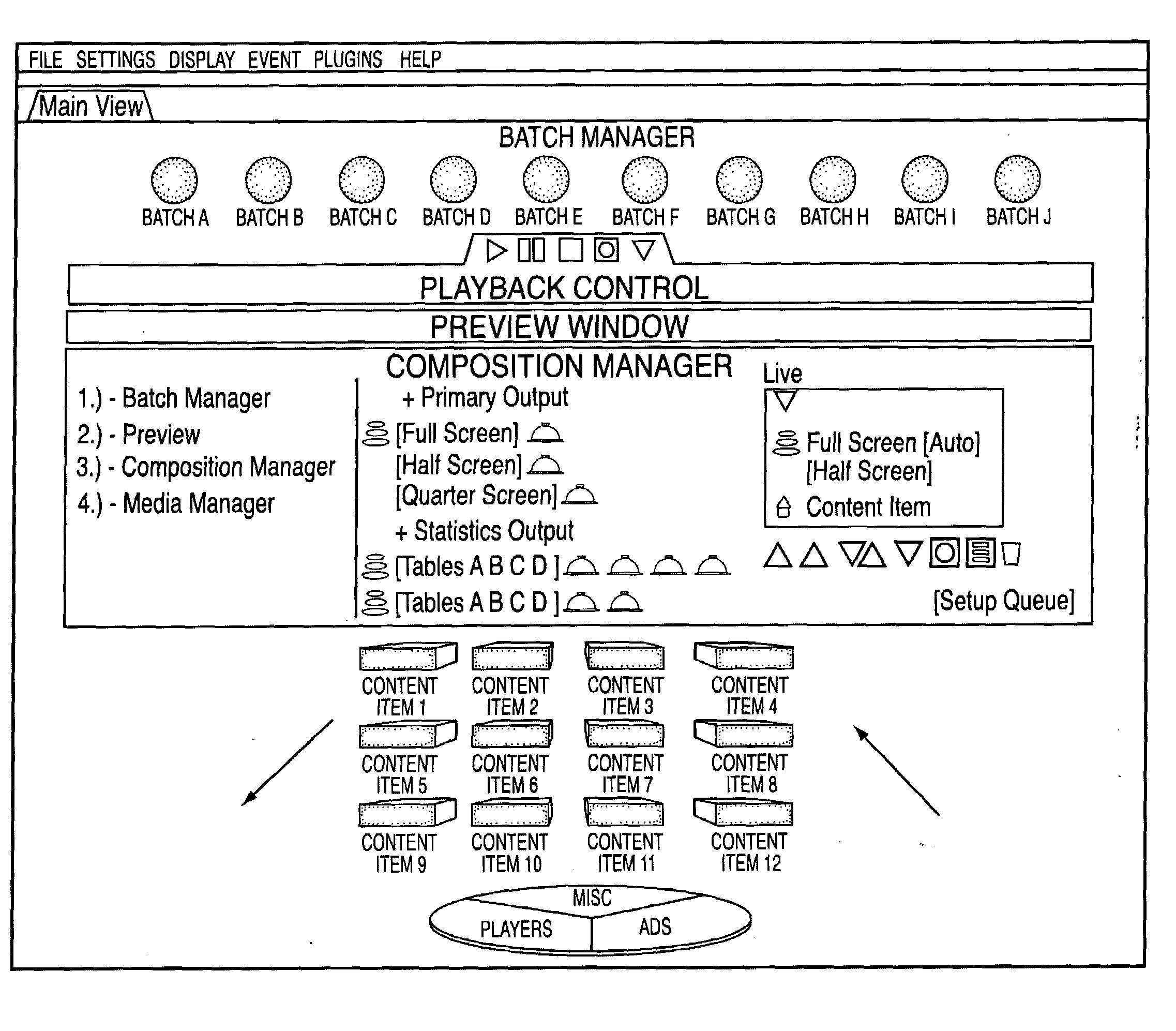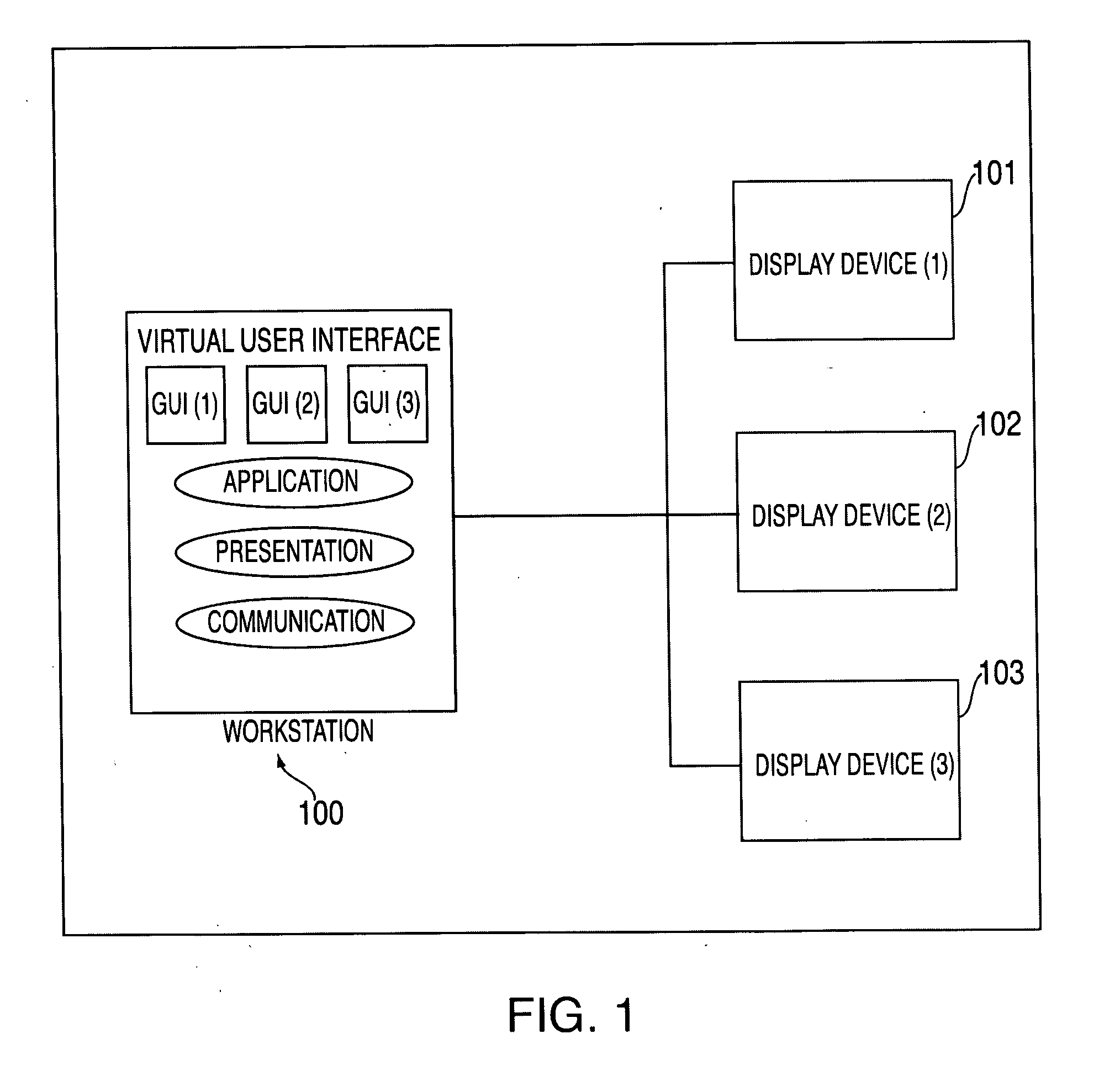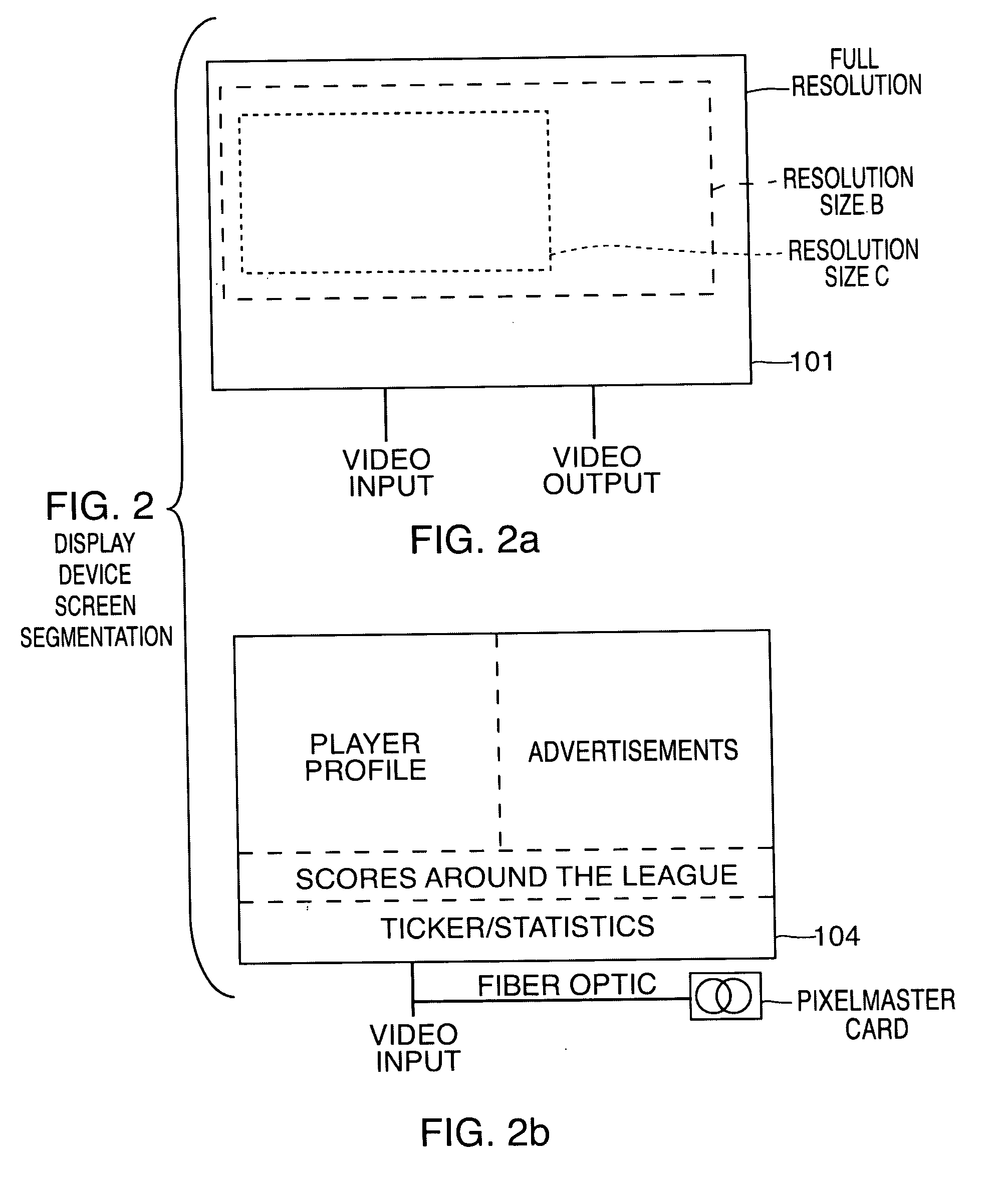Virtual interface and system for controlling a device
a virtual interface and device technology, applied in the field of virtual interfaces and systems for controlling devices, can solve the problems of wasting processing resources, sacrificing the quality of content items, and difficult seamless integration, and achieve the effect of freeing up the resources of the main server
- Summary
- Abstract
- Description
- Claims
- Application Information
AI Technical Summary
Benefits of technology
Problems solved by technology
Method used
Image
Examples
first embodiment
[0057]Turning now to FIG. 5, we see one example of how an embodiment of the invention may be configured on a network. In FIG. 5, the system's hardware devices are distributed across one Main Server 301, three Sub-Servers, and a network switch 302 and connected via Gigabit Ethernet. The system hardware sends a video signal to a router 303 that sends the signal to the video input 304 (processors) of the display devices 305. In the embodiment of FIG. 5, there are two display devices, an LED and a GIP Sideline display. The LED is broken up into four quadrants while the GIP Sideline display is broken up into two strips. FIG. 5 also shows a primary operator location having a monitor, mouse and keyboard. All of the hardware in FIG. 5 is operably connected to the network via DVI, DVI and USB, fiber optic cable, GBit Ethernet, or wireless internet (WAN).
second embodiment
[0058]Turning now to FIG. 6, we see a second example of how an embodiment of the invention may be configured on a network. In FIG. 6, the hardware is distributed across two Main Servers 401 having three monitors 402, keyboard 403 and mouse extender 403. The two Main Servers 401 are connected via Ethernet and router 404 to three Content (Render) servers, a VisionSoft (Main) server, a Statistics Server, and two Backup servers. The three Content (Render) Servers have their own GPUs and are connected to six medium sized display devices. The medium display devices include the SmartVision 15 mm Upper Ring, SmartVision 15 mm Stats, Mitsubishi 10 mm Video Display, SmartVision 15 mm Lower Ring, a first SmartVision 20 mm suite fascia, and a second SmartVision 20 mm suite one fascia. The VisionSoft (Main) Server has a GPU and is connected to a large display, the SmartVision outdoor video display. The Main server uses two monitors for controlling and managing the six medi...
third embodiment
[0059]Turning now to FIG. 7, we see yet another example of how an embodiment of the invention may be configured on a network. In FIG. 7, the hardware is distributed across three Main Servers having four monitors and two sets of input devices. The three Main Servers are connected via Ethernet and router to a Backup Server, Main Server workstation, having a monitor and input device, three Content (Render) Servers, and a sports ticker scoring system feed (Statistics Server). The three Content (Render) Servers are connected to four display devices processors via a fiber optic link. As shown in FIG. 7, the GPUs may transmit content items to the seven display devices via a dedicated feed, a plurality of content feeds, or both. The SmartVision 20 mm Upper Ring display receives a dedicated feed. A first and second SmartVision16.5 mm display device, which can provide 8 virtual scoring panels, receive a total of 8 content feeds, 4 content feeds a piece. A center hung vi...
PUM
 Login to View More
Login to View More Abstract
Description
Claims
Application Information
 Login to View More
Login to View More - R&D
- Intellectual Property
- Life Sciences
- Materials
- Tech Scout
- Unparalleled Data Quality
- Higher Quality Content
- 60% Fewer Hallucinations
Browse by: Latest US Patents, China's latest patents, Technical Efficacy Thesaurus, Application Domain, Technology Topic, Popular Technical Reports.
© 2025 PatSnap. All rights reserved.Legal|Privacy policy|Modern Slavery Act Transparency Statement|Sitemap|About US| Contact US: help@patsnap.com



